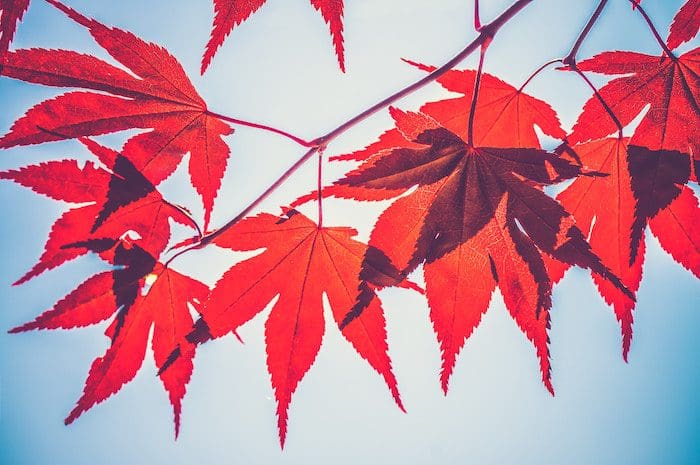In Missouri, the transition into fall is marked by a rapid and majestic changing of summer’s green leaves, to the fabulous, fiery colors of leaves in the fall. This foliage delights the masses, but what force of nature, exactly, causes the leaves to change their hues?
When Do Leaves Change Color?
Obviously, fall is the season in Missouri that brings on the change of color in foliage, and its subsequent shedding from the tree itself. A tree can sense the shortening of days and sunlight, meaning that leaves will not be able to produce a sufficient amount of food for themselves during the winter months. Oddly enough, trees which are genetically similar and exist in the same latitude tend to change colors at around the same time. A tree located high up in a mountain range that is on the same latitude as a tree growing in a low-lying environment will sense the change in sunlight at around the same time of year.
How Do Leaves Change Color?
To answer this question, you first must realize why leaves are green. Leaves are green due to a substance known as chlorophyll, which is necessary for photosynthesis to take place. Photosynthesis is the process of plants producing their food, such as glucose and oxygen, from sunlight and carbon dioxide.
Once trees sense a shortening of the days and of the amount of sunlight they receive, the process of photosynthesis slows, and the leaves begin to shut down. Once photosynthesis ceases to occur, the need for chlorophyll is no longer existent. Chlorophyll disappears, and the color changes begin.
Why Do Leaves Change Different Colors?
The color that a leaf becomes depends on the chemical composition inside of the leaf itself.
Red and Purple Hues: The changing of leaves from green to red or purple is due to the glucose from photosynthesis that is trapped inside of a leaf. Sunny days, paired with cool nights, cause a chemical reaction in the glucose, making the glucose either a dark or fiery red.
Yellow and Orange Hues: In some tree species, yellow-orange substances called carotenoids exist in the leaf all year long. The bright green of chlorophyll covers up these discreet yellow and orange colors during the growing season. But once chlorophyll disappears, the carotenoids have their time to shine.
Brown Hues: The natural looking brown color that leaves from trees such as oak turn is due to waste left in the leaf from the photosynthesis process. All leaves would turn this brown color if they had no chemical reactions occurring, or the presence of other substances was non-existent.
The brightest and most vibrant color changes appear during seasons which boast warm, sunny days and cool nights. This is due to the consistent development of sugars from photosynthesis during the day, and the chemical changes these sugars and glucose cells go through at night.
In Missouri, the fall time is magical. Ensure that your changing landscape lasts year to year with proper and regular maintenance. The professionals at Jackson Tree Service can assist you with tree pruning, tree removal, and other crucial tree care services.

